Balkinization
an unanticipated consequence of
Jack M. Balkin
Balkinization Symposiums: A Continuing List
E-mail:
Jack Balkin:
jackbalkin at yahoo.com
Bruce Ackerman
bruce.ackerman at yale.edu
Ian Ayres
ian.ayres at yale.edu
Corey Brettschneider
corey_brettschneider at brown.edu
Mary Dudziak
mary.l.dudziak at emory.edu
Joey Fishkin
joey.fishkin at gmail.com
Heather Gerken heather.gerken at yale.edu
Abbe Gluck abbe.gluck at yale.edu
Mark Graber
mgraber at law.umaryland.edu
Stephen Griffin
sgriffin at tulane.edu
Jonathan Hafetz
jonathan.hafetz at shu.edu
Jeremy Kessler
jkessler at law.columbia.edu
Andrew Koppelman
akoppelman at law.northwestern.edu
Marty Lederman
msl46 at law.georgetown.edu
Sanford Levinson
slevinson at law.utexas.edu
David Luban
david.luban at gmail.com
Gerard Magliocca
gmaglioc at iupui.edu
Jason Mazzone
mazzonej at illinois.edu
Linda McClain
lmcclain at bu.edu
John Mikhail
mikhail at law.georgetown.edu
Frank Pasquale
pasquale.frank at gmail.com
Nate Persily
npersily at gmail.com
Michael Stokes Paulsen
michaelstokespaulsen at gmail.com
Deborah Pearlstein
dpearlst at yu.edu
Rick Pildes
rick.pildes at nyu.edu
David Pozen
dpozen at law.columbia.edu
Richard Primus
raprimus at umich.edu
K. Sabeel Rahmansabeel.rahman at brooklaw.edu
Alice Ristroph
alice.ristroph at shu.edu
Neil Siegel
siegel at law.duke.edu
David Super
david.super at law.georgetown.edu
Brian Tamanaha
btamanaha at wulaw.wustl.edu
Nelson Tebbe
nelson.tebbe at brooklaw.edu
Mark Tushnet
mtushnet at law.harvard.edu
Adam Winkler
winkler at ucla.edu
Compendium of posts on Hobby Lobby and related cases
The Anti-Torture Memos: Balkinization Posts on Torture, Interrogation, Detention, War Powers, and OLC
The Anti-Torture Memos (arranged by topic)
Recent Posts
Seeing the University More Clearly
Just A Few Blogs
ACS Blog
Alas, a Blog
Althouse
Arts and Letters Daily
Atrios (Eschaton)
Bill of Health
Buzzflash.com
Buzz Machine
Cato at Liberty
Juan Cole (Informed Comment)
Concurring Opinions
The Constitution in 2020
Corrente
Crooked Timber
Daily Howler
Daily Kos
Dana Boyd
Brad DeLong
Digby (Hullabaloo)
Discriminations
Daniel Drezner
Kevin Drum (Mother Jones)
Electrolite
En Banc
Eunomia (Daniel Larison)
Fafblog
Michael Froomkin (Discourse.net)
GovLab (Beth Noveck)
Rick Hasen (Election Law)
History News Network
How Appealing
Ignatz (Sam Heldman)
The Importance of (Ernie Miller)
Infolaw
Instapundit
International Economic Law and Policy Blog
IntLawGrrls
Jacob Levy
Jesus' General
Jurisdynamics
The Kitchen Cabinet
Mark Kleiman
Law Blog Central
Larry Lessig
Lawyers, Guns and Money
Liberal Oasis
Brian Leiter's Law School Reports
The Leiter Reports
Marginal Revolution
Megan McArdle
Memeorandum
Metafilter
Mirror of Justice
The New Republic
Newseum
No More Mister Nice Blog
Brendan Nyhan
Opinio Juris
Orcinus
The Originalism Blog
Pandagon
Passport (Foreign Policy)
Overcoming Bias
Political Animal (Washington Monthly)
Political Theory Daily Review
Political Wire (Taegan Goddard)
The Poor Man
Virginia Postrel
Prawfsblawg
Public Reason
Jonathan Rauch
Raw Story
Redstate
ReligiousLeftLaw.com
Reporters Committee For Freedom of the Press
Reproductive Rights Blog
Rothman's Roadmap to the Right of Publicity
SCOTUS Blog
Seeing the Forest
Clay Shirky
The Shifted Librarian
The Situationist
Larry Solum (Legal Theory)
Andrew Sullivan
Talking Points Memo
Talk Left
Tapped
Tbogg
TechPresident
The Paper Chase (Jurist)
Tom Paine
Tom Tomorrow (This Modern World)
Eve Tushnet
Uggabugga
University of Chicago Law School Faculty Blog
Unqualified Offerings
The Volokh Conspiracy
War and Piece (Laura Rozen)
Wampum
Oliver Willis
Wonkette
Written Description
Matthew Yglesias
Yin
Your Choice of Feeds
1. XML
powered by
2. Atom Feed
3. RSS 2.0
Seeing the University More Clearly
David Pozen
Crisis can be clarifying. Recent events on campuses across
the country have forced many of us to look more closely at how our own universities
work. I have no special insight into most aspects of the Columbia protests or
the administration’s response. But as someone who studies public law and
nonprofit law, I have been struck by a number of legal-institutional forces that
helped bring Columbia to its current conjuncture—all of which relate, in
various mutually reinforcing ways, to the power of the president’s office. 1. Presidential Administration Comes to the University For all the talk of how the modern university has been corporatized, neoliberalized, and so on, there hasn’t been as much
attention paid to the ways in which it has been presidentialized. The presidentialization of Columbia dates back well before the current moment.
Our last president, Lee Bollinger, ran the university for over two decades. During
his tenure, Bollinger oversaw the rise of a substantial administrative
apparatus—the ten highest paid Columbia employees, apart from surgeons, are now all senior executives—as well as the
creation of a dizzying array of research centers, policy institutes,
and global programs that operate more or less independently of the academic
departments. Bollinger’s office also launched countless smaller projects with
discretionary funds. After the insurrection at the Capitol on January 6, 2021,
for instance, he came up with the idea for a Constitutional Democracy
Initiative (with which I am affiliated) and, within weeks, an impressive new
outfit was up and running. Meanwhile, the most broadly representative body on campus, the University Senate,
seemed to become less relevant with every passing year. This basic dynamic is familiar to scholars of U.S. public law, who have long
documented the growth of executive power relative to Congress and the growth of
presidential power within the executive branch—what Justice Elena Kagan
famously termed “presidential administration.” Under
presidential administration, as Kagan describes it, regulatory activity
increasingly becomes “an extension of [the president’s] own policy and
political agenda.” This mode of governance has some real benefits, above all energy
and efficiency. And President Bollinger did many valuable things for the
university. Yet by the time he created a constitutional democracy initiative, Columbia’s
own democratic life had withered considerably. The stage was thus set for some of the most controversial moves made by
Bollinger’s successor, President Minouche Shafik. Shafik has made a series of “bold” decisions without first securing community
support. These include unilaterally revising event policies and
calling the cops on student protesters in defiance of the senate executive
committee’s unanimous opposition. If Shafik has broken with various specific campus norms,
however, we should acknowledge that the brand of centralized leadership she
brings to Columbia is nothing new, and on the contrary is precisely what is
expected of a modern university president. 2. Faculty Just Work Here Professors fortunate enough to have tenure may get the impression that
they are pretty big deals on campus. They have extraordinary job security. They
hold significant power over their students’ educations and career prospects. And
the job description—publishing original research, applying for grants, giving lectures—doesn’t
tend to select for or reward modesty. Within their classrooms and departments, full-time
faculty exercise some meaningful agency and authority. It therefore came as a rude awakening for many faculty members at
Columbia to learn just how little decisional authority we collectively wield at
the university level. When the senate executive committee opposed Shafik’s crackdown
on the student encampment, she went ahead and did it anyway—and there was
nothing, under the University Charter and Statutes, that the committee or its
formidable chair Jeanine D’Armiento could do about it. The full senate then
considered a censure resolution. Had it passed, this act of resistance likewise
would have had only symbolic effect. President Shafik was hired by, serves on,
and reports to the board of trustees, whose members are
largely chosen by … the board of trustees. Faculty are on the outside looking
in. To simplify somewhat, we might say that professors are granted a number
of basic rights within the university, including rights to free speech and due
process and quasi-property rights in the job itself. Students and staff are
granted a partially overlapping, though weaker, bundle of rights. What none of
us have are governance rights against the trustees who really run the
place. We enjoy various individual privileges and protections, but not the
franchise. Legal scholars and political scientists have a term for this sort of
arrangement, too: liberal autocracy. Although self-perpetuating boards of trustees
have long controlled universities like Columbia, the salience of this feature tends
to fade during periods of relative harmony and prosperity. As the Columbia administration’s
actions over the past six months became increasingly contentious, and
increasingly detached from ideals of academic freedom, the autocratic character
of our governance model came to the fore. 3. The Myth of the Endowment Buffer While President Shafik has not been particularly responsive to the views
of faculty majorities, she is often depicted as being highly attuned to the
demands of major donors and rabble-rousing politicians (who have, in turn, started making Columbia-related demands on
one another). The same is true of Shafik’s counterparts at peer schools. This
point about donor and politico influence is almost too obvious to make, except
that it conceals a puzzle. Columbia’s endowment is worth $14 billion. Even if
the endowment has been poorly managed, as Adam Tooze recently demonstrated, isn’t that enough money in the bank to
insulate the president from the most intrusive demands? The leading treatment of this issue in the legal literature is Henry
Hansmann’s 1990 article “Why Do Universities Have
Endowments?” Among Hansmann’s answers to his titular question is that a large
endowment may “serve to protect a university administration … from the need to
cater too closely to the desires of those who ultimately provide the
institution’s income—whether they be students, private donors, or the
government.” The endowment, that is, provides a financial buffer not just
against unexpected economic shocks but also against unwelcome external pressures
of all sorts. In theory, this looks like one of the best arguments against universities
spending a significantly higher percentage of their endowments each year. In practice, however, the argument turns out to be mistaken, or at least
to be in need of serious qualification. What it misses is the sociology of the modern
endowment. Over the past generation or so, having a large endowment has become
something more than a means to support longstanding institutional goals; it has
become an end in itself, a key measure of a university’s prestige and its
president’s performance. And because most philanthropists don’t like to fund boring
old operating budgets, expanding the endowment is often accomplished through
conditional gifts for enticing new endeavors, as reflected in the proliferation
of extra-departmental centers, institutes, and programs referred to above. Once
launched, these non-tuition-receiving entities—and all the jobs, faculty
fiefdoms, and student opportunities that come with them—only tend to increase
the demand for ongoing donations. The endowment, in short, always needs to keep growing, according to the
logic of those who run and rate elite universities, which means that major donors
always need to be cultivated while their political patrons are placated. This
dynamic degrades the endowment’s capacity to serve as a buffer against populist
and plutocratic pressures alike. At the same time, the fundraising and
grandstanding pressures that it creates further fuel the presidentialization of
the university. 4. Legal Pluralism and Student Speech In the senate executive committee’s recent compendium of actions taken by the
administration “that have harmed Columbia University” (pp. 23-24), several of
the items involve the failure to utilize “long-established disciplinary
processes.” With regard to the past few months, at least, the charge is not
that the administration bypassed existing processes altogether or that it misapplied
any particular process. The charge is that the administration routed student
protesters’ cases to certain disciplinary channels, rather than others, on the
expectation that those channels would mete out swifter or sterner punishment.
How could this be possible when Columbia’s governing documents contain no
emergency clause and when everyone at Columbia is subject to the same Rules of University Conduct? The answer is that individuals at Columbia may be subject to three other
sets of rules as well: the Standards and Discipline Policy, the Equal
Opportunity and Affirmative Action Policies and Procedures, and the Interim
University Policy for Safe Demonstrations (adopted this February). It is no
easy task to figure out how these policies relate to one another. After weeks
of studying this issue, a law school working group led by Jeremy Kessler
produced a 12,000-word forensic analysis on which I have drawn. The most
problematic policy this year has been Standards and Discipline, both because it
employs broader definitions of harassing and discriminatory speech than do the
Rules of University Conduct and because it grants fewer procedural protections
to the accused. In an Orwellian twist, this policy is administered by the Center for Student Success and Intervention (CSSI), which helps
students flourish by denying them representation in a process that could lead
to their expulsion. Shafik’s shenanigan, according to the University Senate,
was to start charging student protesters under the Standards and Discipline
Policy, instead of the Rules of University Conduct, so as to punish them more
efficiently. In engaging in this bit of legal arbitrage, the university administration
toggled between not only different procedural frameworks but also different
normative visions of student speech and discipline. The Rules of University
Conduct were adopted after the convulsive campus protests of 1968. They aim to
secure a wide berth for political expression and to stave off content- or
viewpoint-discriminatory administrative responses. In other words, they embody
a liberal speech regime, which President Bollinger came to personify. The CSSI,
by contrast, was established in 2022 and places greater emphasis
on shielding vulnerable students from discriminatory harassment while promoting “students’ holistic well-being” and
values of “Justice, Equity, Diversity & Inclusion.” It embodies a moral-therapeutic
regime. President Shafik’s critics suggest she has weaponized CSSI and its ethic
of safetyism against pro-Palestinian protesters.
Her defenders believe she has enlisted it appropriately in the cause of
combatting antisemitism. Either way, it’s important to see that the
administration quietly asserted the authority to redirect more and more cases
to a particular sort of disciplinary regime, which many experienced as
unfamiliar and unfair, and that this was made possible by the emergence of inconsistent legal orders within the university. 5. Title VI Theater? The same tension between free speech and antidiscrimination values that
Columbia’s rules try to negotiate is also, of course, a larger fault line in American
law. While the First Amendment privileges political expression, Title VI of the
Civil Rights Act of 1964 requires universities that receive federal
funding to stamp out “harassment” and “hostile environments” based on race,
religion, and national origin. In recent months, Jewish and Israeli students
have sued or filed administrative complaints
against Columbia for violating Title VI, as have Palestinian, Arab, and Muslim
students. Shortly before she summoned the NYPD to Hamilton Hall last Tuesday,
President Shafik’s office sent multiple messages to the Columbia community stating
that the Gaza Solidarity Encampment had contributed to “a hostile environment”
for Jewish students and faculty, “in violation of Title VI.” These statements
were remarkable on several levels. The Title VI threshold for university liability is high—the
discriminatory harassment must be so severe and pervasive as to prevent an
individual from participating in educational programs—and scholars continue to
debate whether and to what extent Title VI applies to speech on matters of
public concern. My fellow Jewish colleagues and students hold a wide range of
views on the encampment. (We are Jews, after all.) Yet however upsetting
some may have found the takeover of the lawn, as well as any number of incidents
before and since, it is not at all clear that the encampment placed the
university in violation of Title VI. That issue could be litigated for years. Since
when does Columbia go out of its way to concede liability? The point can be pushed further. Legal standards such as
hostile-environment harassment are not well suited to this situation. These
standards assume a reasonably stable and widely shared baseline as to what
counts as an act of intimidation, on the one hand, and what counts as
public-spirited advocacy, on the other. In the current context, however, that
baseline is itself fiercely contested. Students have disagreed about the
boundaries of acceptable speech many times before. But I cannot think of
another instance where one group’s asserted experience of discriminatory
harassment corresponds so closely with another group’s asserted expression of
political protest—and where both groups contain a substantial share of the
student body. This campus speech debate has produced so much more heat than
light not only because of the horrifying violence to which it responds, but
also because it is taking place in the absence of any consensus on the meaning or
morality of core slogans and symbols. Moreover, the debate is inextricably
bound up with a higher-order argument about who gets to set the terms of
acceptable discourse on Israel-Palestine issues. But let’s say that I am wrong about all of this and the encampment did
indisputably place the university in violation of Title VI. Even when a hostile
environment or other acts of unlawful discrimination are found to exist,
university administrators are given discretion over how to rectify them. In
private suits for money damages, administrators must show that they were not “deliberately indifferent” to discriminatory
conditions. The notion that a university must call in the cops to
fulfill this obligation finds no support in Title VI doctrine, as far as I’m
aware. That notion seems all the more bizarre in a context where many of the arrested
students, including Jewish students, believe that they themselves have been
subject to discriminatory treatment. I do not mean to assert that no Title VI violations have occurred or to
imply that President Shafik appealed to the statute in bad faith. The law of
Title VI in higher education settings is complicated; the facts on the ground
at Columbia have been complicated; and Shafik may well have believed that the
encampment crossed a new legal line. It is nevertheless hard to escape the
conclusion that she invoked Title VI not so much in acknowledgment of a
regrettable legal fact as in service of public persuasion—as an effort to
reassure audiences in Congress, the Department of Education, and beyond that
she is taking antisemitism seriously, and to justify to constituencies on
campus the police raid that would soon follow. From everything I have seen
since Tuesday, the internal persuasion strategy, at least, does not seem to
have worked. * * * There is no shortage of immediate repair work that needs to be done at
Columbia, as at many other universities. But if the thrust of this post is
right, we should redirect some of our critical attention away from President
Shafik herself and toward the office she occupies, away from the latest
divisive decision and toward the decades-long drift toward presidential
administration, which shaped how that decision got made. Reversing this drift, and
developing a more democratic model of internal governance, may be a
prerequisite not only for rebuilding intellectual community but also for
avoiding future campus conflagrations.
Posted
9:45 AM
by David Pozen [link]
Books by Balkinization Bloggers

Gerard N. Magliocca, The Actual Art of Governing: Justice Robert H. Jackson's Concurring Opinion in the Steel Seizure Case (Oxford University Press, 2025)

Linda C. McClain and Aziza Ahmed, The Routledge Companion to Gender and COVID-19 (Routledge, 2024)

David Pozen, The Constitution of the War on Drugs (Oxford University Press, 2024)

Jack M. Balkin, Memory and Authority: The Uses of History in Constitutional Interpretation (Yale University Press, 2024)
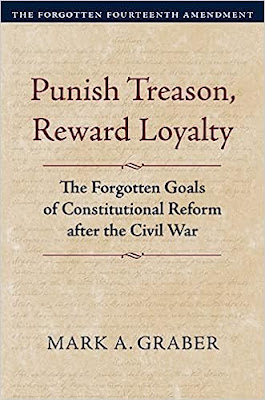
Mark A. Graber, Punish Treason, Reward Loyalty: The Forgotten Goals of Constitutional Reform after the Civil War (University of Kansas Press, 2023)
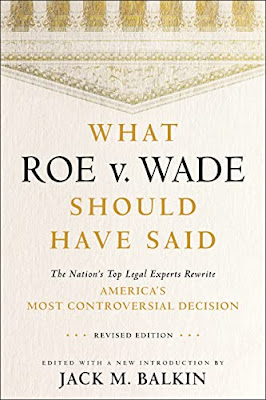
Jack M. Balkin, What Roe v. Wade Should Have Said: The Nation's Top Legal Experts Rewrite America's Most Controversial Decision - Revised Edition (NYU Press, 2023)

Andrew Koppelman, Burning Down the House: How Libertarian Philosophy Was Corrupted by Delusion and Greed (St. Martin’s Press, 2022)

Gerard N. Magliocca, Washington's Heir: The Life of Justice Bushrod Washington (Oxford University Press, 2022)
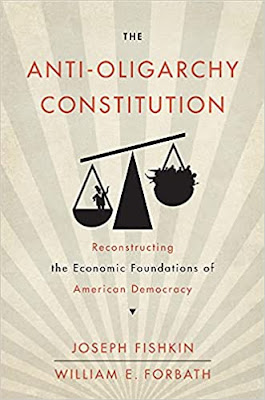
Joseph Fishkin and William E. Forbath, The Anti-Oligarchy Constitution: Reconstructing the Economic Foundations of American Democracy (Harvard University Press, 2022)
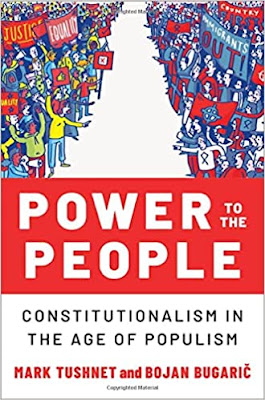
Mark Tushnet and Bojan Bugaric, Power to the People: Constitutionalism in the Age of Populism (Oxford University Press 2021).

Mark Philip Bradley and Mary L. Dudziak, eds., Making the Forever War: Marilyn B. Young on the Culture and Politics of American Militarism Culture and Politics in the Cold War and Beyond (University of Massachusetts Press, 2021).

Jack M. Balkin, What Obergefell v. Hodges Should Have Said: The Nation's Top Legal Experts Rewrite America's Same-Sex Marriage Decision (Yale University Press, 2020)

Frank Pasquale, New Laws of Robotics: Defending Human Expertise in the Age of AI (Belknap Press, 2020)

Jack M. Balkin, The Cycles of Constitutional Time (Oxford University Press, 2020)

Mark Tushnet, Taking Back the Constitution: Activist Judges and the Next Age of American Law (Yale University Press 2020).

Andrew Koppelman, Gay Rights vs. Religious Liberty?: The Unnecessary Conflict (Oxford University Press, 2020)

Ezekiel J Emanuel and Abbe R. Gluck, The Trillion Dollar Revolution: How the Affordable Care Act Transformed Politics, Law, and Health Care in America (PublicAffairs, 2020)

Linda C. McClain, Who's the Bigot?: Learning from Conflicts over Marriage and Civil Rights Law (Oxford University Press, 2020)
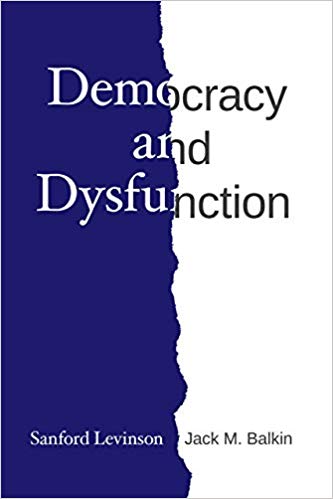
Sanford Levinson and Jack M. Balkin, Democracy and Dysfunction (University of Chicago Press, 2019)

Sanford Levinson, Written in Stone: Public Monuments in Changing Societies (Duke University Press 2018)

Mark A. Graber, Sanford Levinson, and Mark Tushnet, eds., Constitutional Democracy in Crisis? (Oxford University Press 2018)

Gerard Magliocca, The Heart of the Constitution: How the Bill of Rights became the Bill of Rights (Oxford University Press, 2018)

Cynthia Levinson and Sanford Levinson, Fault Lines in the Constitution: The Framers, Their Fights, and the Flaws that Affect Us Today (Peachtree Publishers, 2017)

Brian Z. Tamanaha, A Realistic Theory of Law (Cambridge University Press 2017)

Sanford Levinson, Nullification and Secession in Modern Constitutional Thought (University Press of Kansas 2016)

Sanford Levinson, An Argument Open to All: Reading The Federalist in the 21st Century (Yale University Press 2015)

Stephen M. Griffin, Broken Trust: Dysfunctional Government and Constitutional Reform (University Press of Kansas, 2015)

Frank Pasquale, The Black Box Society: The Secret Algorithms That Control Money and Information (Harvard University Press, 2015)

Bruce Ackerman, We the People, Volume 3: The Civil Rights Revolution (Harvard University Press, 2014)
Balkinization Symposium on We the People, Volume 3: The Civil Rights Revolution

Joseph Fishkin, Bottlenecks: A New Theory of Equal Opportunity (Oxford University Press, 2014)

Mark A. Graber, A New Introduction to American Constitutionalism (Oxford University Press, 2013)

John Mikhail, Elements of Moral Cognition: Rawls' Linguistic Analogy and the Cognitive Science of Moral and Legal Judgment (Cambridge University Press, 2013)

Gerard N. Magliocca, American Founding Son: John Bingham and the Invention of the Fourteenth Amendment (New York University Press, 2013)

Stephen M. Griffin, Long Wars and the Constitution (Harvard University Press, 2013)

Andrew Koppelman, The Tough Luck Constitution and the Assault on Health Care Reform (Oxford University Press, 2013)

James E. Fleming and Linda C. McClain, Ordered Liberty: Rights, Responsibilities, and Virtues (Harvard University Press, 2013)
Balkinization Symposium on Ordered Liberty: Rights, Responsibilities, and Virtues

Andrew Koppelman, Defending American Religious Neutrality (Harvard University Press, 2013)

Brian Z. Tamanaha, Failing Law Schools (University of Chicago Press, 2012)

Sanford Levinson, Framed: America's 51 Constitutions and the Crisis of Governance (Oxford University Press, 2012)

Linda C. McClain and Joanna L. Grossman, Gender Equality: Dimensions of Women's Equal Citizenship (Cambridge University Press, 2012)

Mary Dudziak, War Time: An Idea, Its History, Its Consequences (Oxford University Press, 2012)

Jack M. Balkin, Living Originalism (Harvard University Press, 2011)

Jason Mazzone, Copyfraud and Other Abuses of Intellectual Property Law (Stanford University Press, 2011)

Richard W. Garnett and Andrew Koppelman, First Amendment Stories, (Foundation Press 2011)

Jack M. Balkin, Constitutional Redemption: Political Faith in an Unjust World (Harvard University Press, 2011)

Gerard Magliocca, The Tragedy of William Jennings Bryan: Constitutional Law and the Politics of Backlash (Yale University Press, 2011)

Bernard Harcourt, The Illusion of Free Markets: Punishment and the Myth of Natural Order (Harvard University Press, 2010)

Bruce Ackerman, The Decline and Fall of the American Republic (Harvard University Press, 2010)
Balkinization Symposium on The Decline and Fall of the American Republic

Ian Ayres. Carrots and Sticks: Unlock the Power of Incentives to Get Things Done (Bantam Books, 2010)

Mark Tushnet, Why the Constitution Matters (Yale University Press 2010)
Ian Ayres and Barry Nalebuff: Lifecycle Investing: A New, Safe, and Audacious Way to Improve the Performance of Your Retirement Portfolio (Basic Books, 2010)
.jpg)
Jack M. Balkin, The Laws of Change: I Ching and the Philosophy of Life (2d Edition, Sybil Creek Press 2009)

Brian Z. Tamanaha, Beyond the Formalist-Realist Divide: The Role of Politics in Judging (Princeton University Press 2009)
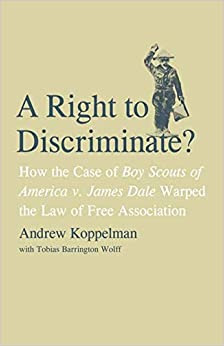
Andrew Koppelman and Tobias Barrington Wolff, A Right to Discriminate?: How the Case of Boy Scouts of America v. James Dale Warped the Law of Free Association (Yale University Press 2009)

Jack M. Balkin and Reva B. Siegel, The Constitution in 2020 (Oxford University Press 2009)
Heather K. Gerken, The Democracy Index: Why Our Election System Is Failing and How to Fix It (Princeton University Press 2009)

Mary Dudziak, Exporting American Dreams: Thurgood Marshall's African Journey (Oxford University Press 2008)

David Luban, Legal Ethics and Human Dignity (Cambridge Univ. Press 2007)

Ian Ayres, Super Crunchers: Why Thinking-By-Numbers is the New Way to be Smart (Bantam 2007)

Jack M. Balkin, James Grimmelmann, Eddan Katz, Nimrod Kozlovski, Shlomit Wagman and Tal Zarsky, eds., Cybercrime: Digital Cops in a Networked Environment (N.Y.U. Press 2007)
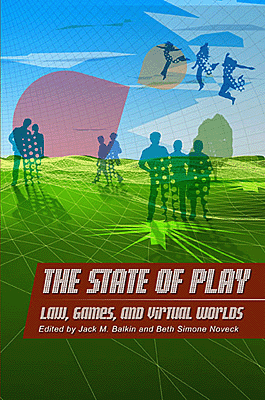
Jack M. Balkin and Beth Simone Noveck, The State of Play: Law, Games, and Virtual Worlds (N.Y.U. Press 2006)

Andrew Koppelman, Same Sex, Different States: When Same-Sex Marriages Cross State Lines (Yale University Press 2006)
Brian Tamanaha, Law as a Means to an End (Cambridge University Press 2006)
Sanford Levinson, Our Undemocratic Constitution (Oxford University Press 2006)
Mark Graber, Dred Scott and the Problem of Constitutional Evil (Cambridge University Press 2006)
Jack M. Balkin, ed., What Roe v. Wade Should Have Said (N.Y.U. Press 2005)
Sanford Levinson, ed., Torture: A Collection (Oxford University Press 2004)
Balkin.com homepage
Bibliography
Conlaw.net
Cultural Software
Writings
Opeds
The Information Society Project
BrownvBoard.com
Useful Links
Syllabi and Exams